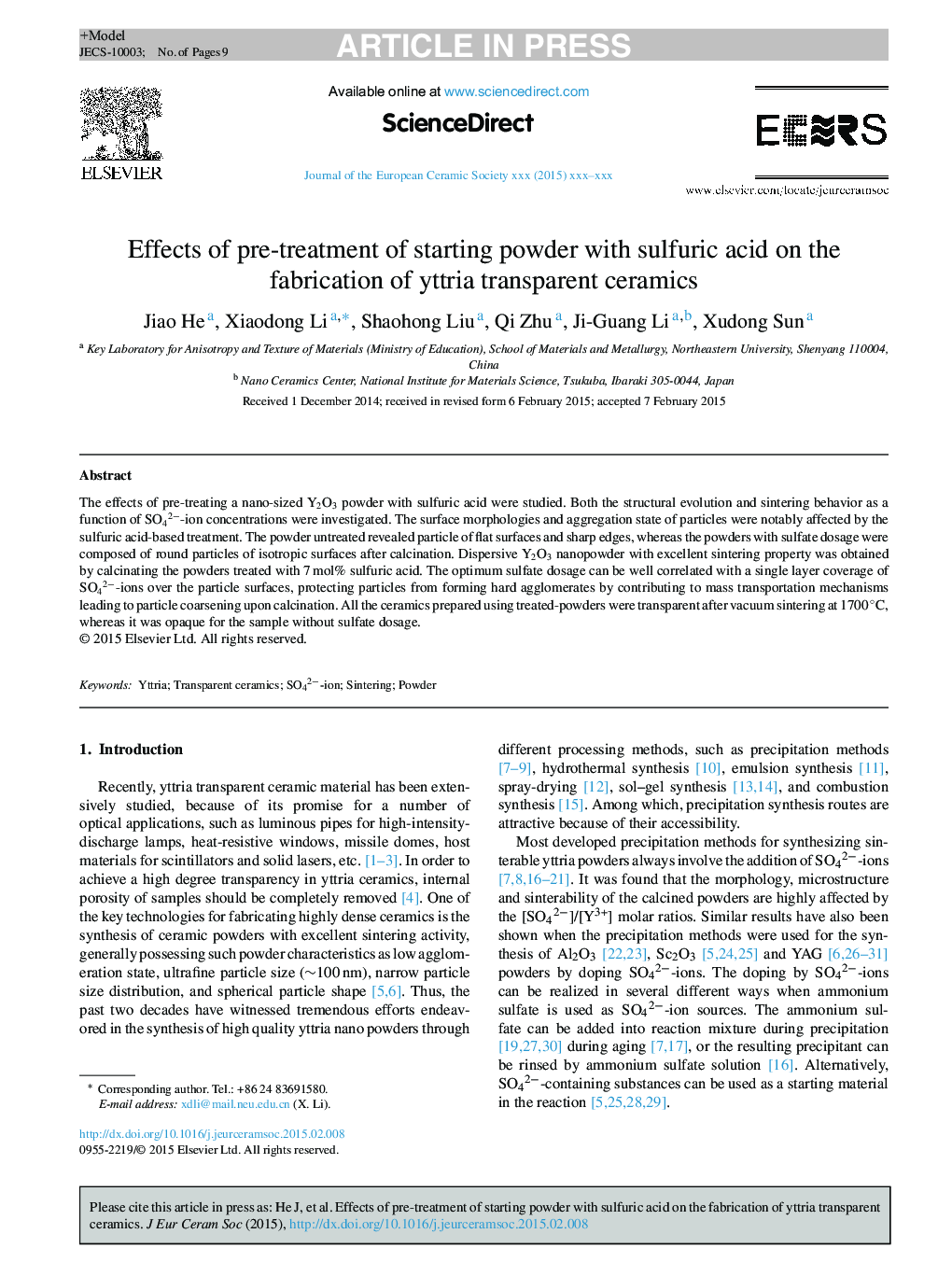| Article ID | Journal | Published Year | Pages | File Type |
|---|---|---|---|---|
| 10629569 | Journal of the European Ceramic Society | 2015 | 9 Pages |
Abstract
The effects of pre-treating a nano-sized Y2O3 powder with sulfuric acid were studied. Both the structural evolution and sintering behavior as a function of SO42â-ion concentrations were investigated. The surface morphologies and aggregation state of particles were notably affected by the sulfuric acid-based treatment. The powder untreated revealed particle of flat surfaces and sharp edges, whereas the powders with sulfate dosage were composed of round particles of isotropic surfaces after calcination. Dispersive Y2O3 nanopowder with excellent sintering property was obtained by calcinating the powders treated with 7 mol% sulfuric acid. The optimum sulfate dosage can be well correlated with a single layer coverage of SO42â-ions over the particle surfaces, protecting particles from forming hard agglomerates by contributing to mass transportation mechanisms leading to particle coarsening upon calcination. All the ceramics prepared using treated-powders were transparent after vacuum sintering at 1700 °C, whereas it was opaque for the sample without sulfate dosage.
Related Topics
Physical Sciences and Engineering
Materials Science
Ceramics and Composites
Authors
Jiao He, Xiaodong Li, Shaohong Liu, Qi Zhu, Ji-Guang Li, Xudong Sun,
